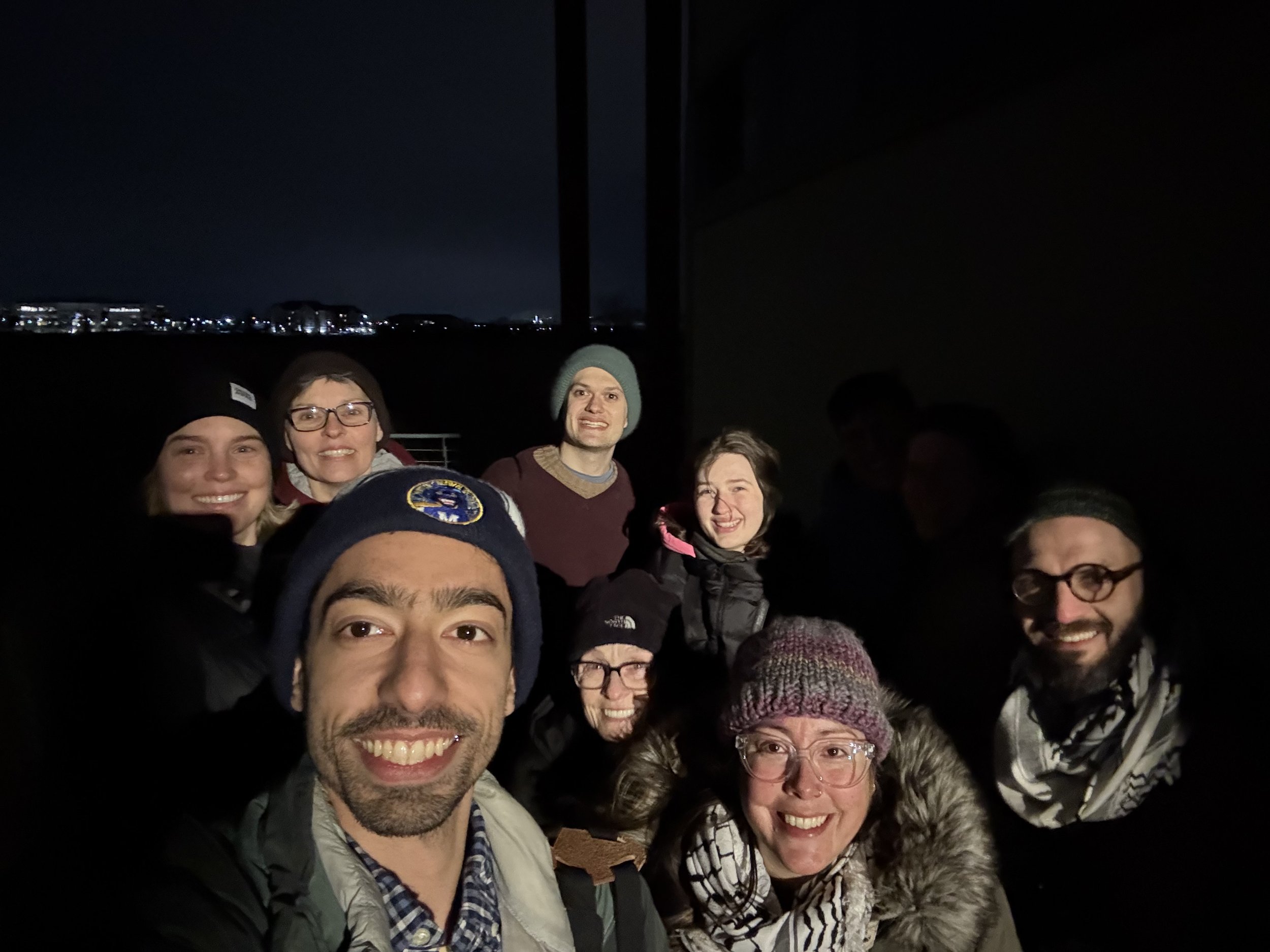Field Trips Recap: American Woodcock Walks
words by Kris Hansen
There’s a lively debate about whether an American Woodcock says “peent,” “meent” or “meep.”
Then again, there’s a lively debate about whether you call them a timberdoodle, Labrador twister, night partridge or bog sucker.
American Woodcock. Photo by Sean McCann, Park 566, March 29, 2025.
More than 80 people pondered these deep questions while scanning the darkening skies on one of five woodcock walks held by COS between March 24 and April 3, 2025. At least 25 woodcocks were seen and heard.
Additional species making an appearance included Short-eared Owls, a Great Horned Owl, Wilson’s Snipe, Green-winged Teal, Killdeer, Song Sparrows, Swamp Sparrows, coyotes, deer and more.
At Marian Byrnes Park, participants watched a Great Horned Owl swoop low over an American Woodcock, yet it continued calling.
COS President Edward Warden explained that the male woodcock first identifies a fairly flat place on a grassland to call. He turns in a circle slowly, calling in each direction.
He then rockets high into the sky and spirals down, making a distinctive whistling sound through his wing feathers, until landing roughly where he started. Any female woodcocks impressed by his display will then meet him there to mate.
American Woodcock. Photo by Sean McCann, Park 566, March 29, 2025.
It’s a myth that woodcocks start this display at sundown, which is when the sun first begins to slip below the horizon. Instead, they wait for twilight, when the sun has fully disappeared but its rays continue to lighten the sky.
Woodcock displays continue for 20 to 30 minutes, until the sky is completely dark, and then end for the night.
Good locations to look for American Woodcocks during migration include Kent Fuller Air Station Prairie (see checklists one and two) , Park 566, Marian Byrnes Park, and Indian Boundary Prairies.
Air Station Prairie is wet and requires water-resistant boots.





